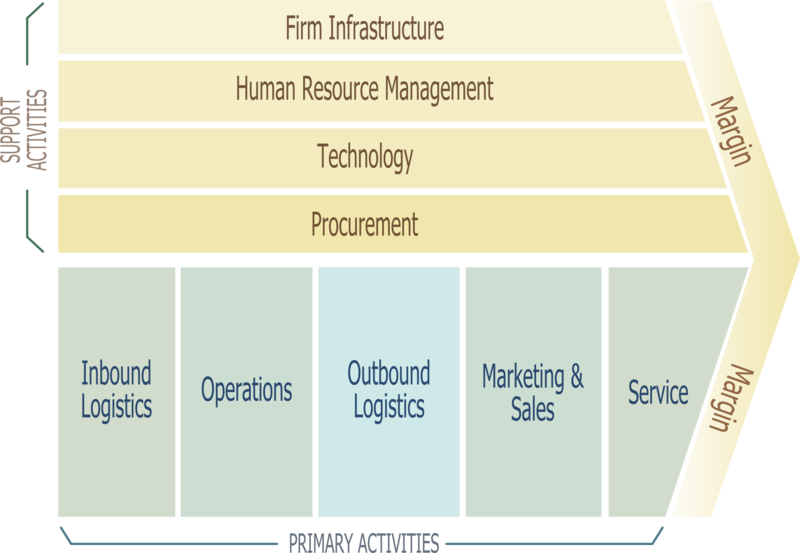 |
| Porter Value Chain (from Wikipedia) |
Working with clients face-to-face is always interesting and enlightening. However much a company may need help from a consultant in a specific area of their business, the consultant always learns a new way of looking at business problems. For me, a recent trip to a client led to many discussions about strategies for improving the business, both the little things and the big things. The big things, such as M&A and moving to a new headquarters, often have the greatest payback, but in terms of looking at the day to day operations of the business, looking at how a firm can improve its customer service quality while reducing wasteful activities can also pay back big.
During my visit, we started discussions about the value chain. We envisioned a long paper chart, pinned to the office wall, showing everything from prior to attracting a new prospective customer to the business, through serving them successfully and profitably, to finally ending the relationship and eventually dissolving that closed account completely. Its a compelling visual, since it touches so many pieces of the business, and can help business people who have become so entrenched in their piece of the puzzle to look around and see how their work impacts others, both positively and negatively. This long value chain / enterprise business process will make a great project for somebody, one day.
The issue with all of this is that the orange slice view of value does not help people understand the business processes that are being performed. It highlights that we are all one "big happy team", but in terms of understanding, it shows little else that is tangible to a business person. So the value chain can not replace business process definitions, which show the way work related specific transactions flow through the organization. And business processes rarely show where the valuable work is done in the organization, just showing where work gets done in an overall timeline. So my reminder to myself as a consultant is this: "just because I can make a business process work better, I must look at the value chain to understand where to focus my efforts". Nothing new, but a good reminder to all of us to get out out the weeds and look at the orange. And when things start getting a little too high-level-strategic with little focus, I can alway dive back to fixing specific business processes that I've now shown will deliver value to the business, and importantly its customers.
A post from the Improving It blog
Let us help you improve your business today. Visit www.consected.com
No comments:
Post a Comment